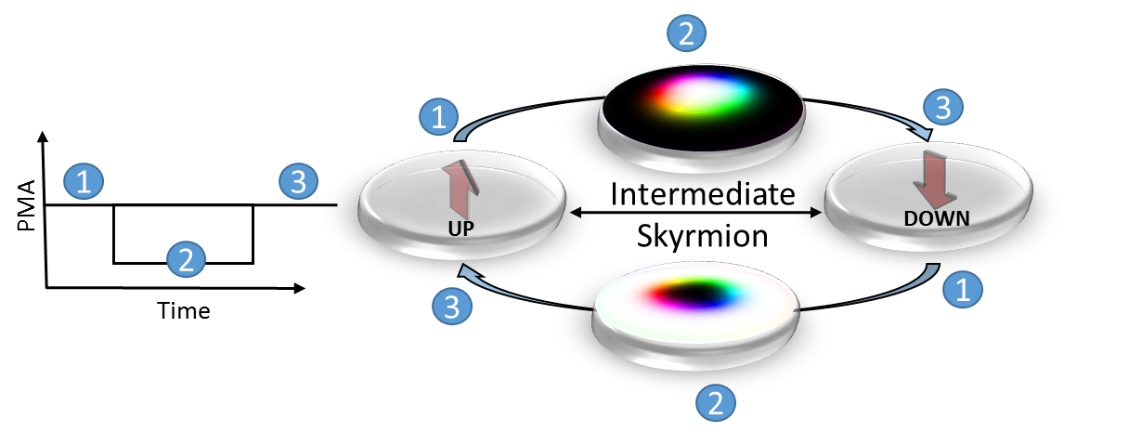Computer Memory Devices
Skyrmion mediated non-volatile magnetic random access memory
Device for nanomagnetic memory
VCU researchers have developed a new method for electric field induced switching of perpendicular nanomagnets via an intermediate skyrmion state, which can be used in the development of non-volatile memory. Current methods of achieving magnetization reversal require the use of a spin current which can consume large amounts of energy. This technology is completely electric field controlled as it utilizes voltage control of magnetic anisotropy (VCMA), thus allowing for extremely energy efficient memory devices for high density memory applications.
The technology
This technology utilizes an electric field that modifies the perpendicular magnetic anisotropy (PMA) of the free layer in a magnetic tunnel junction (MTJ) and the presence of Dzyaloshinskii–Moriya interaction creates an alternative route for magnetization reversal via an intermediate skyrmion state. This obviates the need for utilizing precessional magnetization dynamics as well as a bias magnetic field that are employed in traditional VCMA switching. The proposed switching mechanism is robust at room temperature leading to extremely low error switching while also being potentially 1–2 orders of magnitude more energy efficient than state-of-the-art spin transfer torque-based switching. In addition to ferromagnetic reversal, this process can also be used to achieve skyrmion core reversal and switch between skyrmion and ferromagnet states.

Figure 1. Left: PMA profile, Right: Spin states at various times during reversal as obtained by voltage controlled magnetic anisotropy (VCMA). A voltage pulse decreases the PMA present at the oxide/ferromagnet interface until the ferromagnetic state (State 1) is transformed to a skyrmionic state (State 2). If the PMA is restored by withdrawing the voltage pulse at this point, the skyrmion state is annihilated and a reversed ferromagnetic state (State 3) is obtained.
